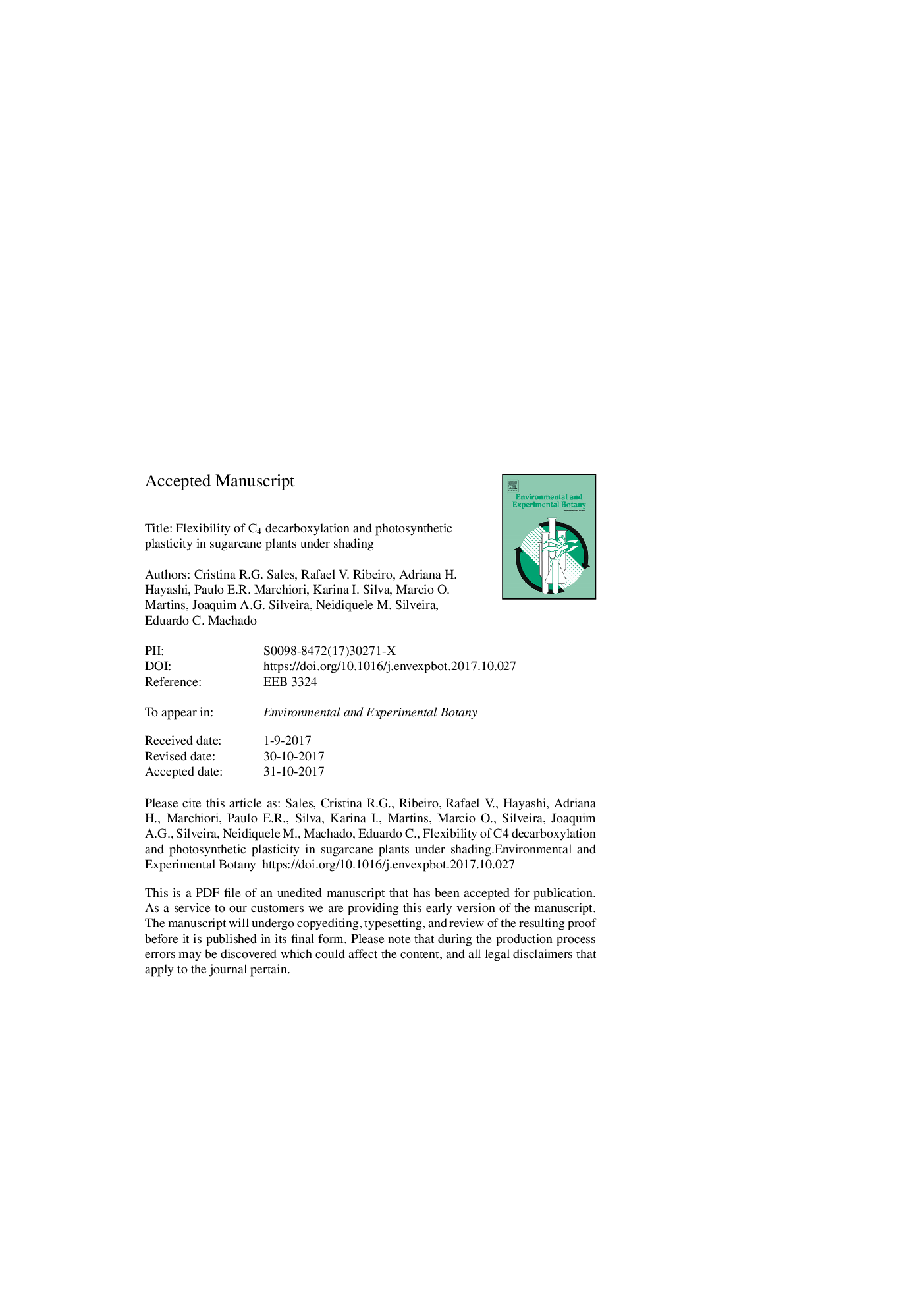| Article ID | Journal | Published Year | Pages | File Type |
|---|---|---|---|---|
| 8887036 | Environmental and Experimental Botany | 2018 | 30 Pages |
Abstract
The flexibility between C4 photosynthetic subtypes NADP-malic enzyme (NADP-ME) and phosphoenolpyruvate carboxykinase (PEPCK), recently identified in some C4 species, confers high photosynthetic efficiency under varying light conditions. Theoretically, PEPCK decarboxylation uses less quanta per CO2 fixed than NADP-ME, suggesting an increase in PEPCK activity could be advantageous under shading, as CO2 leakiness increases under low light. Thus, we hypothesize that sugarcane plants have flexibility among the decarboxylation pathways, i.e., more than one decarboxylation route occurs independent of the environmental condition; furthermore, low light availability induces biochemical and anatomical adjustments resulting in increased PEPCK activity, which could contribute to maintaining or even increasing quantum efficiency of CO2 assimilation under limiting light. Two sugarcane varieties were evaluated and both presented activities of the three decarboxylases, either under full sunlight or shading. In vitro PEPCK activity increased in plants grown under low light, suggesting an upregulation of this decarboxylation pathway. Accordingly, changes in chloroplast arrangement of bundle sheath cells from centrifugal to evenly distributed were found. Our data suggest that such biochemical and anatomical adjustments found in sugarcane grown under shading were important to maintain the maximum quantum efficiency of CO2 assimilation. Finally, we propose a model highlighting the integration between the decarboxylation pathways under shading, considering carboxylation and decarboxylation pathways in sugarcane plants.
Keywords
ADXNAD-malic enzymeNAD-MEPPDKNADP-MELeakinessRoot dry matterLeaf dry matterLDMRDMPEPCPEPCKδ13CSaccharum spp.PEPAmaxETRABXDAPSLANADP-malic enzymephotosynthetic active radiationcarbon isotope discriminationDark respirationdays after plantingSpecific leaf areaC4 photosynthesisphosphoenolpyruvatePhosphoenolpyruvate carboxylasephosphoenolpyruvate carboxykinaseLeaf bladeLeaf arealow lightStomatal conductanceBundle sheathPyruvate orthophosphate dikinase
Related Topics
Life Sciences
Agricultural and Biological Sciences
Ecology, Evolution, Behavior and Systematics
Authors
Cristina R.G. Sales, Rafael V. Ribeiro, Adriana H. Hayashi, Paulo E.R. Marchiori, Karina I. Silva, Marcio O. Martins, Joaquim A.G. Silveira, Neidiquele M. Silveira, Eduardo C. Machado,
